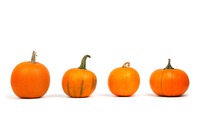- Home
- Halloween
Blog Categories
Recent Posts
Jack O'Lanterns, Pies, and Peru: How the pumpkin earned it's place as a fall favorite
Posted by on

We all feel the change of seasons on some level. Some dread the end of summer, since it signals less sunlight and shorter days. Others look forward to fall – to the changing colors of the leaves, holidays to share with friends and relatives, cooler weather, and time to cook nourishing meals to celebrate a different pace and season. Fall brings a shift into slower rhythms and points us towards the end of another year.
Though we talk about one or two days in this pumpkin post, this time of year is about much more than Halloween or Thanksgiving. This season brings about endings from a time of action and higher energy and moves us, sometimes grudgingly, into one of introspection and contemplation. As we move through this transitory season when the past and present overlap, it’s a time of gratitude for what we have and what we can look forward to in the New Year.
Who is Stingy Jack?
The story of the Halloween pumpkin takes many twists and some scary turns. Steeped in folklore as many modern traditions are, this story originates in 17th century Irish mythology with a legend about a man named “Stingy Jack.” According to the story, Stingy Jack1 invited the Devil to have drink. We’re not sure why he did, but he did. Being stingy, Jack didn’t want to pay for the drink and convinced the devil to turn himself into a coin that he could use to pay for their drinks.
The Devil, for some reason, did as he was asked and Jack pocketed the money, placing it next to a silver cross in his pocket. This prevented the Devil from shape-shifting back into his original form. When Jack freed the Devil, he did so under the condition that he wouldn’t bother Jack for a year and if Jack died, he wouldn’t claim his soul.
The next year, their paths crossed again and Jack tricked the Devil into climbing a tree to pick some fruit. While he was in the tree, Jack carved a cross into the tree’s bark. The Devil couldn’t come down until he promised not to bother Jack for 10 years.
When Jack died fairly soon after, God refused to let him into heaven. And the Devil, also upset, wouldn’t allow Jack into hell. He sent Jack off to wander in the night with a piece of burning coal for light. Jack put the coal into a carved out turnip and has been roaming the Earth with it ever since. The Irish call his ghost “Jack of the Lantern”, which was eventually shortened to “Jack O’Lantern.”
As this belief moved through Ireland and Scotland, residents made Jack’s lantern by carving ugly faces into turnips, gourds, large beets, or potatoes and put them in windows to keep Stingy Jack and other wandering spirits away.
The Origins of Halloween
Halloween began as a Celtic festival called Samhain2, which celebrates the Celtic New Year on November 1. The Celts lived roughly 2,000 years ago in what is now Ireland, Northern France, and the United Kingdom. November 1 signified the end of summer and the harvest, and the start of the winter season – a time associated with human death and darkness. The Samhain festival started the night before, on October 31, when Celts believed the boundary between the worlds of the living and dead was blurred and the ghosts of the dead returned to earth.
Parts of the early celebration are still incorporated in today’s Halloween, though for different reasons. The Celts wore costumes of animal heads and skins and sacrificed crops and animals over sacred bonfires to their gods and ghosts. They believed that the presence of other world spirits allowed the Celtic priests to see into the future and tell fortunes. They relit their home fires from large sacred bonfires, believing the fire would protect them through the long winter months.
Pumpkins in the Americas Pumpkins, a type of large squash, were first found by the Spanish growing in northern Argentina near the Andes, but not in other areas of South America. Squash did exist in North America, and was carried over parts of the country by Indians in their travels and also grown by several tribes. The word we use for squash comes from the Massachuset Indian word askutasquash,meaning "eaten raw or uncooked." There are three main types of squash: winter squash ( C. moschata), summer squash ( C. pepo) and pumpkins ( C. maxima). Within those three species are dozens of varieties including gourds, Cinderella pumpkins, yellow crooked neck squash, Spaghetti squash, and Turks Turban.
Pumpkins were brought back to Europe, where they became part of England’s pie-making culture, which had for centuries been producing complex stuffed pastries. When the Pilgrims sailed for America on the Mayflower in 1620, it’s likely some of them were as familiar with pumpkins as the Wampanoag, who helped them survive their first year at Plymouth Colony. A year later, when the 50 surviving colonists were joined by a group of 90 Wampanoag for the first Thanksgiving, some type of pumpkin was served.
As useful as the orange squash were, they weren’t always popular. In 1654, Massachusetts ship captain Edward Johnson wrote that as New England prospered, people prepared “apples, pears, and quince tarts instead of their former Pumpkin Pies3.”
Pumpkin pie had many forms. A 1653 French cookbook told chefs to boil the pumpkin in milk and strain it before putting it in a crust. English writer Hannah Woolley’s 1670 “Gentlewoman’s Companion” developed a pie filled with alternating layers of pumpkin and apple, spiced rosemary, sweet marjoram and a handful of thyme. And sometimes a crust wasn’t needed; an early New England recipe involved filling a hollowed-out pumpkin with spiced, sweetened milk and cooking it directly in a fire. By the early 18th century. pumpkin pie had earned a place at the Thanksgiving table, as Thanksgiving became a New England regional holiday. In 1705, the Connecticut town of Colchester famously postponed its Thanksgiving for a week because there wasn’t enough molasses available to make pumpkin pie, and Amelia Simmons’ pioneering 1796 “American Cookery” contained a pair of pumpkin pie recipes.
Halloween Pumpkin Carving Halloween in America didn’t take off until waves of immigrants from Ireland and Scotland came over in the mid-1800s. Irish and Scottish immigrants brought the Jack O’Lantern tradition with them and discovered pumpkins were easier to carve than turnips, beets, or potatoes. Although it’s not known exactly when the first pumpkin was carved and lit, the first mention of pumpkins as jack o’lanterns comes at around the same time. In 1866, the children’s magazine “Harper’s Young People” reported that “a great sacrifice of pumpkins” had been made that for that year’s Halloween celebrations3. Pumpkin carving grew more and more popular as the years went on. By the 1920s, Halloween was embraced throughout the United States.
As
Halloween
pumpkin carving4 grew into a multi-million dollar
industry, American farmers began to diversify the types of pumpkins they grew
and bred new types of squash for carving and eating. The most famous carving
pumpkin, the Howden Pumpkin with its thick stem, shallow ribs, and thin flesh,
was developed by John Howden in the 1960s. Other varieties like the Sugar Pie,
Kabocha, and carnival are better for pies and eating and can be found at farms
and farmers markets around the country.
There’s more to autumn
than pumpkins, but as you can see, this simple squash is a nutritious, albeit
occasionally spooky, part of fall for many reasons. It’s a part of our cultural
identity, and of the season.
References:
1. http://www.history.com/topics/halloween/jack-olantern-history
2. http://www.irishcentral.com/roots/-top-ten-irish-traditions-for-halloween-see-photos-105754748-237724251.html
3. http://www.history.com/news/hungry-history/the-history-of-pumpkin-pie
4. http://www.pumpkinnook.com/hween/carve.htm
Information provided in this communication is not designed to and does not provide medical advice, professional diagnosis, opinion, treatment or services to you or to any other individual. This is general information for educational purposes only. The information provided is not a substitute for medical or professional care, and you should not use the information in place of a visit, call consultation or the advice of your physician or other healthcare provider. Wise Choice Marketing Inc is not liable or responsible for any advice, course of treatment, diagnosis or any other information, services or product you obtain through Wise Choice Marketing Inc.


 Loading... Please wait...
Loading... Please wait...













